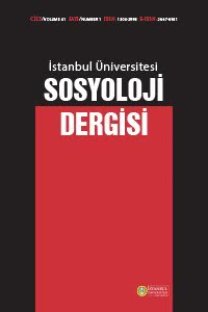Değişim ve Kimlik Bağlamında İstanbul'dan Özgün Bir Mekansal Kesit: Rumelihisarı
Ait olduğu medeniyet ailesi, kültürel biçimlerinden anlaşılabilen kentler, orada yaşayan topluluğun estetik beğenilerini temsil eder. Kentin görünümleri; kentin mimari biçimlenmesinin yanı sıra doku, renk, koku, ses, rahatlık, konfor ve estetik haz duygusunu da içine alan ortam ve koşullar ile sarmalanır. Böylece her kent; kendi güzellik anlayışını, özgün havasını ve kimliğini kazanır. Bu çalışma, İstanbul şehir kültürünün özgün bir mekansal kesitini oluşturan Rumelihisarı üzerinden, değişim ve kimlik bağlamında mahalle kültürünü ele almaktadır. Derinlemesine görüşme tekniği uygulanarak niteliksel bir alan araştırması yapılmış; ulaşılan veriler (1) aidiyet meselesi ve sosyal ayrışma, (2) doğayı kavrama ve yaşayış biçimleri, (3) komşuluk ilişkileri başlıkları altında açıklanmıştır. Son olarak, kimlik konusu tartışılmakta ve kent yönetimine yönelik öneriler geliştirilmektedir.
Anahtar Kelimeler:
Kent Sosyolojisi, Mahalle Kültürü, Toplumsal Değişme, Kimlik, Rumelihisarı
A Specific Spatial Cross-Section from Istanbul in the Context of Change and Identity: Rumelihisarı
Through cultural forms of cities, one can find out the civilization family it belongs to, and this generally represents the value of the aesthetic tastes of the community living there. Views of the city are surrounded by an environment and conditions which not only contain architecture, but also textures, colors, smells, sounds, convenience, comfort, and a sense of aesthetic pleasure. So, each city has its own understanding of beauty, unique atmosphere, and identity. This study deals with the neighborhood culture within the context of change and identity based on Rumelihisarı, an authentic spatial cross-section of Istanbul's city culture. In-depth interviews were conducted through a qualitative technique, and data obtained from this study were analyzed with regards to (1) the question of belonging and social distinction, (2) the understanding of nature and lifestyles, and (3) neighborhood relations. Lastly, the identity of the city was discussed, and suggestions were developed for local administration.
Keywords:
Urban Sociology, Neighborhood Culture, Social Change, Identity, Rumelihisarı,
- ISSN: 1304-2998
- Başlangıç: 2020
- Yayıncı: İstanbul Üniv. Edebiyat Fak. Sosyoloji Böl.
Sayıdaki Diğer Makaleler
Yaşa Göre Değer Farklılıkları ve Siyasi Kuşak Aidiyeti
Sosyal Hizmete Kültürel Yaklaşım: 2011 Van Depremi Örneği
Ömer Miraç YAMAN, Mehmet Ali AKYURT
Edebiyatın Kültürel Yönlerini Kullanarak Yabancı Dil Öğretmek
İç Savaş ve Savaş Sonrası İspanyası'nın İlk Döneminde Toplumsal Değişim
Tanzimat Döneminde Modern Bilim Algısı
İlk Osmanlı Seçimleri ve Parlamentosu
Fasti'nin Açtığı Pencereden Roma Takvimine Bakış
Değişim ve Kimlik Bağlamında İstanbul'dan Özgün Bir Mekansal Kesit: Rumelihisarı
